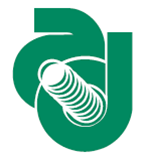Speaker
Dr
Saikat Biswas
(GSI Helmholtzzentrum für Schwerionenforschung GmbH)
Description
GEM will be used in CBM Muon Chamber (MUCH) located downstream of the Silicon Tracking System (STS) of the CBM experiment along with other sophisticated detectors. In GSI detector laboratory an R&D effort is launched to study the characteristics of GEM detectors for the CBM experiment. The primary goals of this R&D program are: (a) to verify the stability and integrity of the GEM detectors over a period of time, during which a charge density of the order of several Coulomb/cm$^2$ is accumulated in the detector; (b) to establish the functioning of a triple GEM as a precise tracking detector under the extreme condition of the CBM experiment; (c) to study usual parameters e.g., efficiency, rate capability, long term stability, spark probability by varying conditions like temperature, gas composition or radiation dose. One triple double mask GEM detector obtained from CERN with 3 mm drift gap, 2 mm transfer gap and 2 mm induction gap has been studied systematically. The voltage to the drift plane and individual GEM plates has been applied through a voltage divider chain. The signals obtained from all readout pads summed by an add-up board and a single input is fed to a charge sensitive preamplifier. A LabView based data acquisition system is used. The variation of the effective gain, resolution of this detector with variation of the applied high voltage has been measured with $^{55}$Fe X-ray source for different gas mixtures and with different gas flow rates etc.
Optional extended abstract
The fraction of large signal (probable spark) relative to average signal has also been measured by setting different threshold values. Fabrication of new 10 cm × 10 cm GEM detector with newly designed box and their characterisation is also done. The test results and details of the fabrication will be presented.
Author
Dr
Saikat Biswas
(GSI Helmholtzzentrum für Schwerionenforschung GmbH)
Co-authors
Mr
A. Abuhoza
(GSI)
Mr
A. Marinov
(CERN)
Prof.
A. Sharma
(CERN)
Dr
C. J. Schmidt
(GSI)
Prof.
H.R. Schmidt
(University of Tübingen)
Mr
J. Hehner
(GSI)
Mr
M. Träger
(GSI)
Mr
S. Colafranceschi
(CERN)
Dr
U. Frankenfeld
(GSI)

